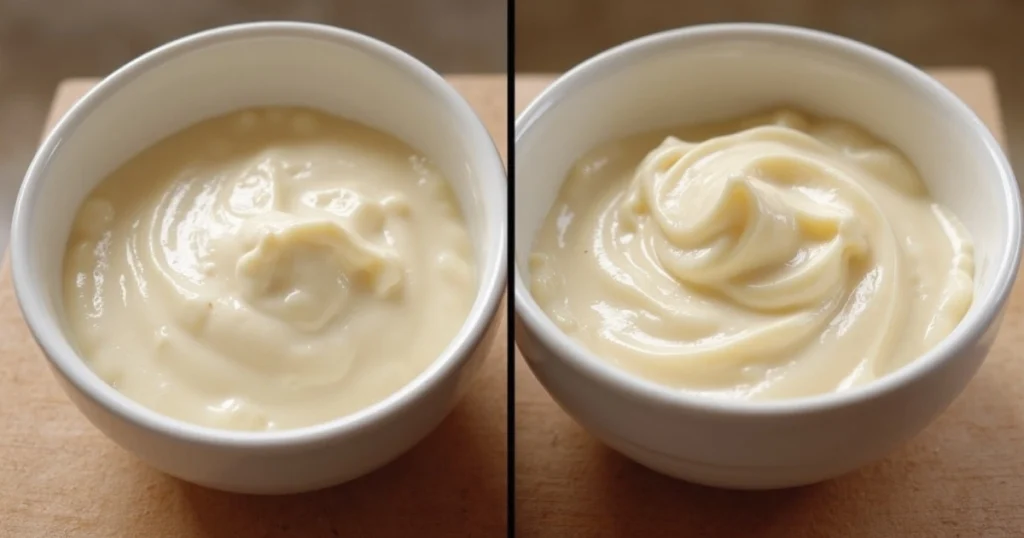When it comes to elevating your desserts, cream cheese filling is the ultimate secret weapon. Whether you’re baking cakes, cookies, or pastries, this versatile and delicious addition can take your creations to the next level. But how do you achieve that perfectly smooth texture and balanced flavor? This guide will share all the secrets you need to know to master cream cheese filling, from essential techniques to creative uses.
Table of Contents
What Makes Cream Cheese Filling So Special?
Versatility in Desserts
One of the best things about cream cheese filling is its adaptability. You can use it to enhance almost any dessert, from rich cheesecakes to light and flaky pastries. It’s not just for sweet dishes either — cream cheese filling can add a tangy twist to savory creations like stuffed bagels or vegetable tarts.
Key Ingredients for Creamy Perfection
The star of any cream cheese filling is, of course, the cream cheese. Opt for full-fat varieties for the richest texture, but low-fat options work well if you’re aiming for a lighter treat. Complement it with powdered sugar for sweetness, vanilla extract for warmth, and lemon zest for a zippy contrast. Every ingredient works together to create a filling that’s smooth, creamy, and bursting with flavor.
Smooth Texture and Tangy Flavor
What sets cream cheese filling apart is its unique combination of creamy texture and tangy flavor. The slight acidity of the cream cheese cuts through the sweetness, creating a balanced taste that pairs perfectly with a wide range of baked goods. Achieving this harmony depends on using the right techniques and ingredients, which we’ll explore in the next sections.
Essential Ingredients and Tools for Perfect Cream Cheese Filling
Key Ingredients to Use

- Cream Cheese: Full-fat for richness or low-fat for a lighter option.
- Butter: Adds smoothness and helps achieve a creamy consistency.
- Powdered Sugar: Sweetens the filling while keeping the texture fine.
- Vanilla Extract: Add a hint of vanilla to elevate and deepen the overall taste.
- Lemon Zest or Juice: Provides a tangy kick to balance the sweetness.
Tools of the Trade
To achieve that perfect consistency, having the right tools on hand is essential:
- Electric Mixer: A hand mixer or stand mixer ensures the cream cheese and butter are fully blended without lumps.
- Mixing Bowls: Use bowls that are large enough to hold all your ingredients comfortably.
- Spatula: For scraping down the sides of the bowl to ensure everything is evenly mixed.
Ingredient Substitutes and Alternatives
If you have specific dietary needs, there are numerous substitutes you can try. Dairy-free or vegan cream cheese works well, and coconut sugar or maple syrup can replace powdered sugar for a natural sweetener. Experimenting with these substitutes can yield delightful variations while accommodating different needs.
Step-by-Step Guide to Making Cream Cheese Filling
Preparing the Ingredients
Always ensure your ingredients have reached room temperature before you begin. Cold cream cheese or butter can lead to a lumpy filling. If you’re short on time, cut the cream cheese and butter into small pieces to speed up the softening process.
Mixing for the Perfect Texture

- Cream the Base: Start by beating the cream cheese and butter together until smooth and fluffy. This step is crucial for achieving a silky texture.
- Add Sweetness: Gradually sift in the powdered sugar to avoid clumps, mixing on low speed to prevent a sugar cloud.
- Flavor It Up: Mix in the vanilla extract and lemon zest. Adjust the flavor by sampling the mixture as you go.
Adjusting the Flavor Profile
If you want to get creative, try adding cocoa powder for a chocolate twist or fruit puree for a fruity variation. These small adjustments can make your cream cheese filling uniquely yours.
Common Mistakes to Avoid When Making Cream Cheese Filling
Not Softening Cream Cheese Properly
Using cold cream cheese is a common pitfall that leads to a lumpy texture. Always bring it to room temperature for smooth mixing. If you’re in a rush, you can microwave it for 10-second intervals until softened but not melted.

Overbeating the Mixture
While it’s important to blend the ingredients thoroughly, overbeating can incorporate too much air, resulting in a runny filling. Mix just until the ingredients are combined and smooth.
Storing Cream Cheese Filling Incorrectly
Improper storage can ruin the texture and freshness of your filling. Store it in an airtight container in the refrigerator, where it will keep for up to five days. If you’re not using it immediately, give it a quick stir before applying it to your dessert.
Creative Ways to Use Cream Cheese Filling
Desserts That Shine with Cream Cheese Filling

- Cakes: Layer it between red velvet or carrot cake for a classic pairing.
- Pastries: Pipe it into puff pastry shells or danishes for a creamy surprise.
- Cookies: Use it as a filling for sandwich cookies or thumbprint cookies.
Savory Applications
Cream cheese filling isn’t just for sweets! Try it as a savory spread for bagels or stuffed into jalapeño poppers for a delicious appetizer.
Pairing Ideas
Pair cream cheese filling with complementary flavors like fresh berries, dark chocolate, or citrus fruits. These combinations enhance the taste and create a well-rounded dessert experience.
Conclusion
Mastering the art of cream cheese filling is all about the right balance of ingredients, proper techniques, and a touch of creativity. Whether you’re making a classic red velvet cake or experimenting with new dessert ideas, cream cheese filling is your go-to solution for adding rich flavor and creamy texture. Now it’s your turn to put these tips into practice and create desserts that leave everyone asking for seconds!
Share your favorite recipes using cream cheese filling in the comments below, and don’t forget to tag us on social media with your creations. Happy baking!

